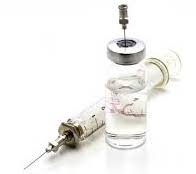
All patients do get a fair amount of swelling in the treated areas for the first week with some discomfort but they are well apprised that this will occur prior to treatment. The amount of fat reduction has met most patient’s expectations whichi have been kept to a modest level by thorough pre-treatment counseling. One application that I have found particularly useful is in the treatment irregularities or residual fat areas AFTER liposuction surgery.
Even in the best of hands, some small percentage of liposuction patients will have irregularities in the skin over the treated areas. These areas may be made up of either depressions (too much fat removed), high spots (not enough fat removed), or some admixture of both. The decision to treat any of these residual liposuction issues should be delayed for at least 6 weeks after surgery and ideally not until 3 months after the original procedure, giving the body time to completely heal and resolve temporary irregular areas due to swelling and retained fluids such as blood. Once an irregular area is confirmed and the target is stable (meaning it will not improve with any more time and everyone is certain of that), it must then be determined what the cause (too much or little fat left) of it is. Depressed areas can only be treated by fat injections through another surgery. Elevated or too high areas represent too much fat still which can be improved by further fat removal. This is where the role of LipoDissolve can be very valuable.
The thought and expense of returning to surgery is not appealing to patient and plastic surgeon alike. Plus, to get at the area a long straight cannula from afar must be introduced which will traumatize some treated areas which look fine and has the potential of causing another ‘problem’ while trying to solve the current one. A spot treatment, like LipoDissolve, is ideal. It can be injected directly into the problem area, in the office, with no recovery, and at a very low cost. Most ‘high spots’ after liposuction are generally small and each area may only require a few injections. While it may require a few injections sessions over several months to get the desired result, the ease of LipoDissolve administration and the ability to place it exactly where the problem is makes it a better solution to those postoperative liposuction issues where too much fat is the cause.
Dr. Barry Eppley
Indianapolis, Indiana


